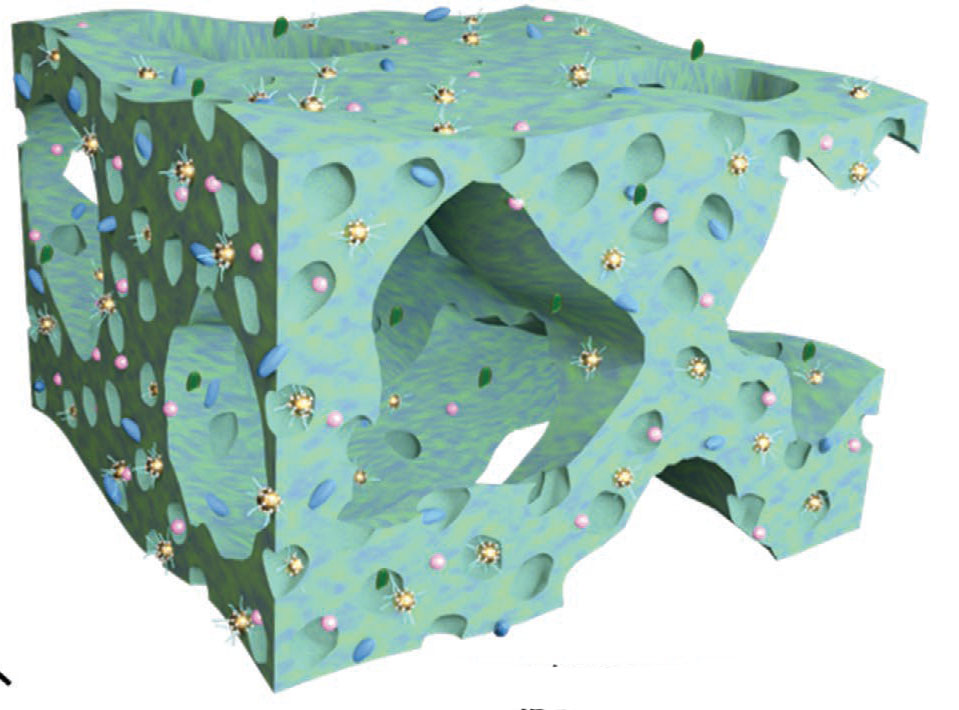| Mar 22, 2022 |
Long-term continuous glucose monitoring with smart contact lenses
(Nanowerk News) Several research projects are working on reinventing the contact lens as a smart electronic device that, for instance, works as a self-powered biosensor for various point-of-care monitoring and wireless biomedical sensing, which may detect in real time the pathogen, bacteria, glucose, and infectious keratitis present in tear fluid. One example is a recently developed sensor for diabetic and glaucoma diagnosis.
|
|
In addition to sensors, researchers are devising numerous applications for smart contact lenses, ranging from drug delivery systems to protection from electromagnetic wave damage. Even picture-taking and scanning with contact lenses is not a scene from a science fiction movie anymore. Scientists have developed a graphene light detector has the potential to put heat vision technology into a contact lens.
|
|
Researchers have also demonstrated contact lenses that measure the glucose levels of the wearer in real time. However, these contact lens-based approaches have several critical issues including low stability of glucose oxidase, low and inconsistent sensitivity of glucose sensors, small volume of tears (∼5–7 µL) on the ocular surface, and slow diffusion rate of tears through hydrogel substrates.
|
|
The accurate detection of glucose without hysteresis is one of the most important clinically unmet needs for continuous glucose monitoring (CGM) in the body fluid to track the blood glucose levels.
|
|
The detection of glucose using minimally invasive CGM devices are typically performed using electrochemical sensors consisting of hydrogels with immobilized glucose oxidases. To improve glucose sensor sensitivity, various nanomaterials have been harnessed such as carbon nanotubes, gold doped graphene and gold porous structures.
|
|
In a recent paper in Advanced Materials ("Bimetallic Nanocatalysts Immobilized in Nanoporous Hydrogels for Long-Term Robust Continuous Glucose Monitoring of Smart Contact Lens"), researchers present smart contact lenses containing bimetallic nanocatalysts immobilized in nanoporous hydrogels for long-term and robust CGM.
|
 |
| Bimetallic nanocatalysts immobilized in nanoporous hydrogels.
|
|
The nanopores in the hydrogels enable the reversible and continuous monitoring of glucose concentration with a fast diffusion rate of reaction species and a rapid swelling rate. Gold-platinum bimetallic nanocatalysts modified with hyaluronate facilitate nanoparticle-mediated charge transfer in the nanoporous hydrogels, resulting in high sensitivity, fast response time, and low detection
limit.
|
|
In their work, the team demonstrates that the smart contact lenses can accurately monitor increasing and decreasing blood glucose levels with 94.9% acceptable data in diabetic (n = 3) and normal (n = 3) rabbits.
|
|
With regard to human applications, the team already confirmed that their smart contact lens could measure the tear glucose levels in a human with data transmission to a smartphone.
|

 By
Michael
Berger
– Michael is author of three books by the Royal Society of Chemistry:
Nano-Society: Pushing the Boundaries of Technology,
Nanotechnology: The Future is Tiny, and
Nanoengineering: The Skills and Tools Making Technology Invisible
Copyright ©
Nanowerk LLC
By
Michael
Berger
– Michael is author of three books by the Royal Society of Chemistry:
Nano-Society: Pushing the Boundaries of Technology,
Nanotechnology: The Future is Tiny, and
Nanoengineering: The Skills and Tools Making Technology Invisible
Copyright ©
Nanowerk LLC
